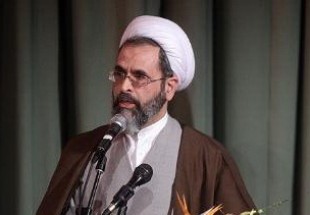

Iranian religious cleric, Hojjatol Islam Alireza Arafie lectured certain Arab countries for choosing to share their interest with Muslims’ common enemies noting,” They (Arab states) decided to share their willful objectives with those of Israeli regime laying the way for enemies to advance their baneful policies in the World of Islam”
“These states’ ruling is not built on Islamic principles and true divine Islam,” pointed out the religious cleric,” pointed out the religious cleric urging Muslims rulers to abide by Islamic teachings.
Elsewhere in his remarks, the religious cleric place stress on the prime importance of boosting solidarity noting, “Shiite and Sunni solidarity of will in the long run ca foil the hatched schemes of the enemies.”
Hojjatol Islam Arafie held divine Islam as the religion of affection and fraternity leveling criticism at those Arab states distancing from Islamic guidelines and instead following the policies and objectives set by western powers in the region.







